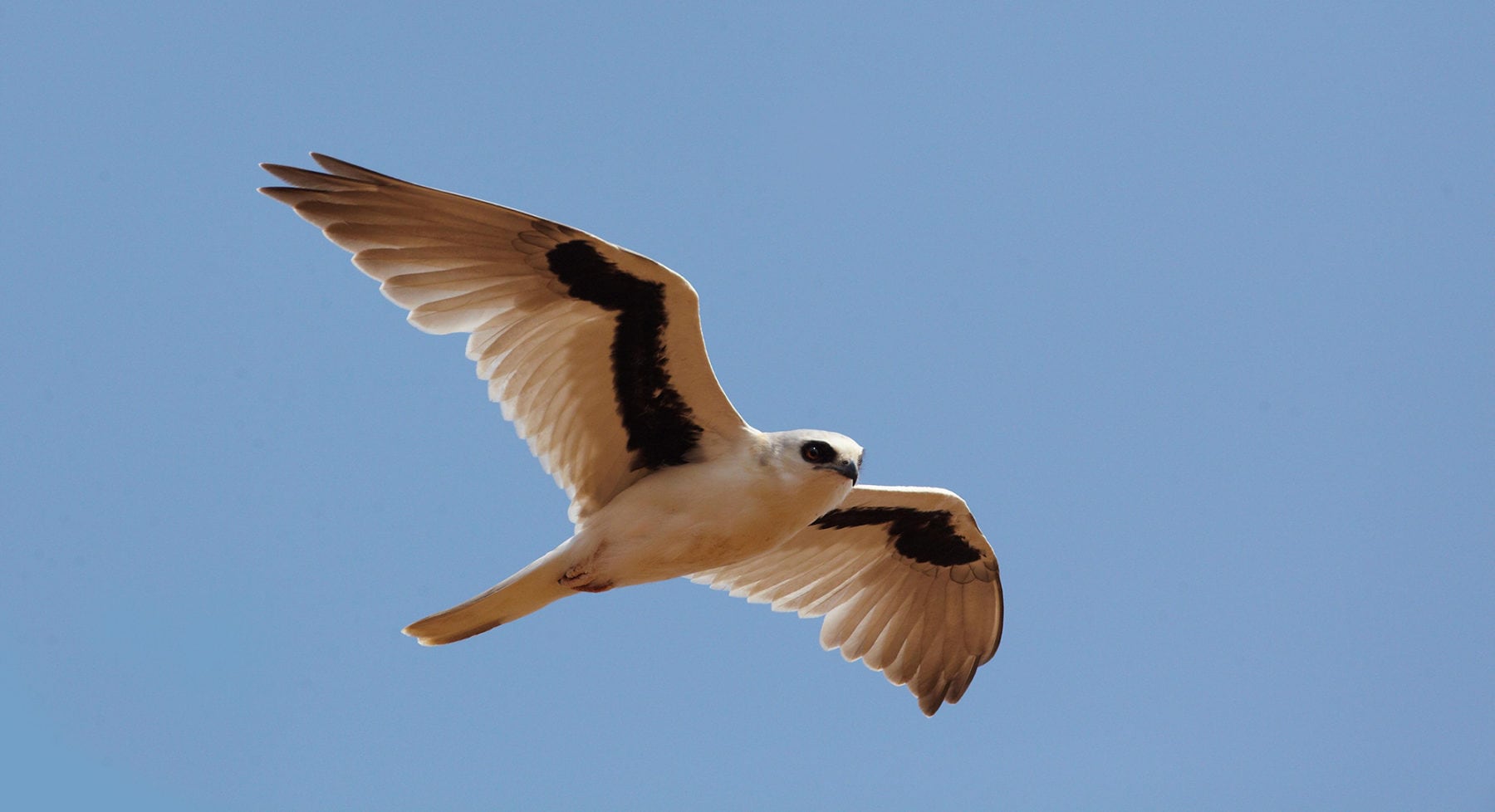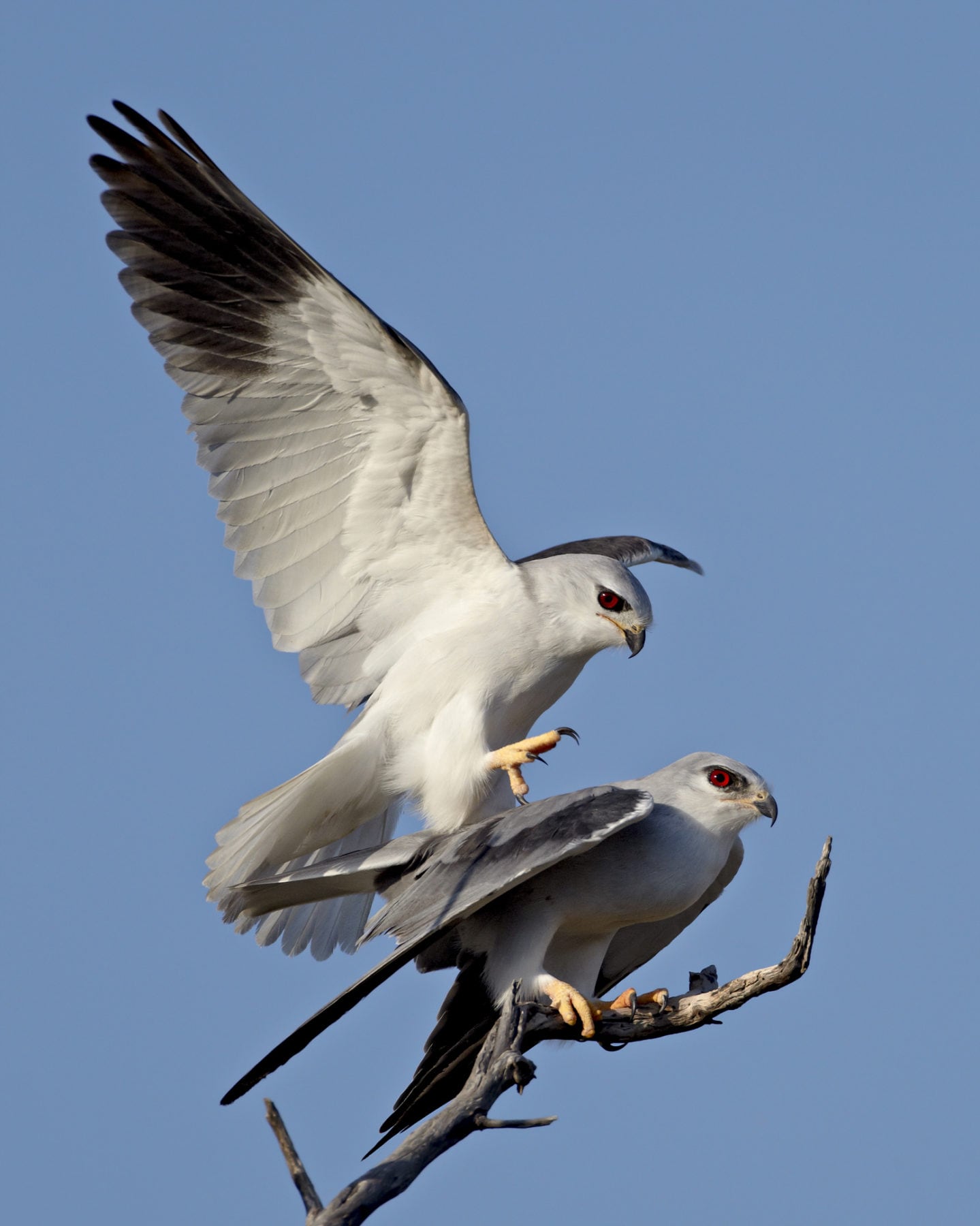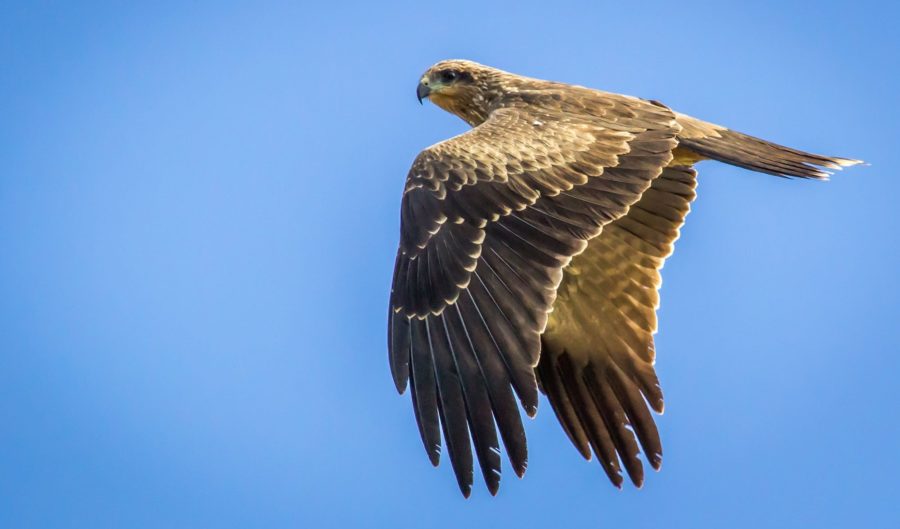Don’t be fooled by the black-shouldered kite’s smouldering good looks

Bec Crew
Bec Crew

LIKE AN IMPOSSIBLY attractive assassin created in a Soviet bunker somewhere, the black-shouldered kite is as beautiful as it is deadly. I mean, look at those smoky fox eyes. The coquettish head tilt. That chest of billowing white down you just want to nuzzle your head into. She knows she’s better than us, and who are we to argue?
Found throughout Australia, patrolling the open grasslands, vineyards, and valleys from above, the black-shouldered kite (Elanus axillaris) is most commonly sighted in the country’s south-east and south-west corners and along the south-east Queensland coast. The species is also occasionally found in northern Hobart and up around the Torres Strait islands.
A member of the Elaninae subfamily of kites, which are known to be smaller than the Milvinae subfamily of kites, the black-shouldered kite is roughly 35 cm in length, with a wingspan of up to 100 cm.
There are four species in its genus, two of which are native to Australia. The letter-winged kite (Elanus scriptus) is smaller and rarer than the black-shouldered kite, and with a much patchier range across the mainland. Like the black-shouldered kite, your best bet to spot one would be in the southeast corner of the country. And you might try looking at night – the letter-winged kite is nocturnal, and is often mistaken for an eastern barn owl in poor light.
Both species look quite similar, until you see them fly. The letter-winged kite is named for the distinct black markings that run along the undersides of its wings. As you can see here, they might look like an M or a W when viewed from below:

The black-shouldered kite also has underwing markings, but they look very different.
When hunting, the black-shouldered kite will work in pairs or alone, targeting mice and other small rodents. It will ride on the wind, searching for prey, and then divebomb them at the opportune moment.
It’s a fairly silent hunter, and will only occasionally let out a short, high-pitched whistle during the breeding season (between August and January), which it uses to communicate with its mate.
The monogamous pairs these birds form are the result of elaborate aerial courtship displays, which involve the male offering the female food in mid-air. For a brief moment, the two will be locked together, each gripping the same prey with their feet as they hover.
Their offspring will have little brown flecks of colour running along their head and chest until they mature, sort of like spots on a deer fawn.
The Australian black-shouldered kite can be easily confused with another species, Elanus caeruleus. Referred to as either the black-shouldered kite or the black-winged kite, it’s found in sub-Saharan Africa and tropical Asia, and some parts of Europe:

We’ll leave you with this footage of an Australian black-shouldered kite looking disarmingly cute as it waits out the wind in Werribee, Victoria:


